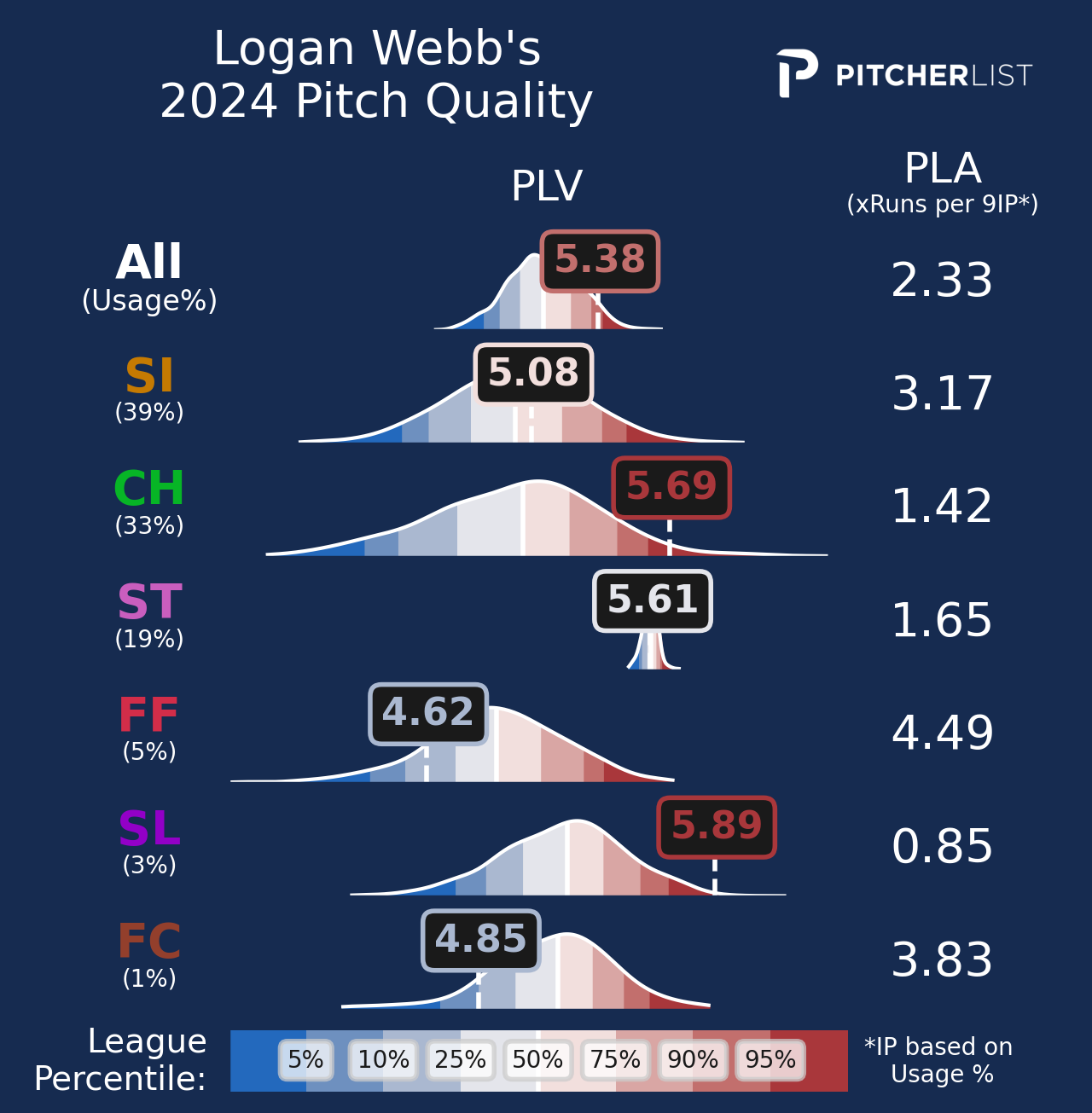In early July, we revealed our AL and NL All-Star starters based on PLV data. However, we did not include starting pitchers, as it felt like naming just one for each league wasn’t good enough. So this month, we’ll give our starters some love, selecting a PLV All-Star starting rotation for both leagues. We took the top five starters from each league based on PLV / PLA statistics through August 1. The only criterion was that the pitcher must have thrown at least 1,500 pitches on the season (roughly 100+ innings). Without further ado, let’s get to it:
American League
Gilbert’s sub-500 record is likely due to the Mariners’ putrid offense. He’s been terrific, boasting the lowest WHIP in the AL (minimum 100 IP) and a top-ten ERA. Gilbert regularly throws five pitches, and all have been posted PLAs below 3.00. The most deadly pitch in his arsenal is his slider, which has generated the lowest PLA in baseball at a microscopic 1.21. He employs the pitch regularly, keeping it in the zone half the time and generating strikes nearly 72% of the time he throws it.
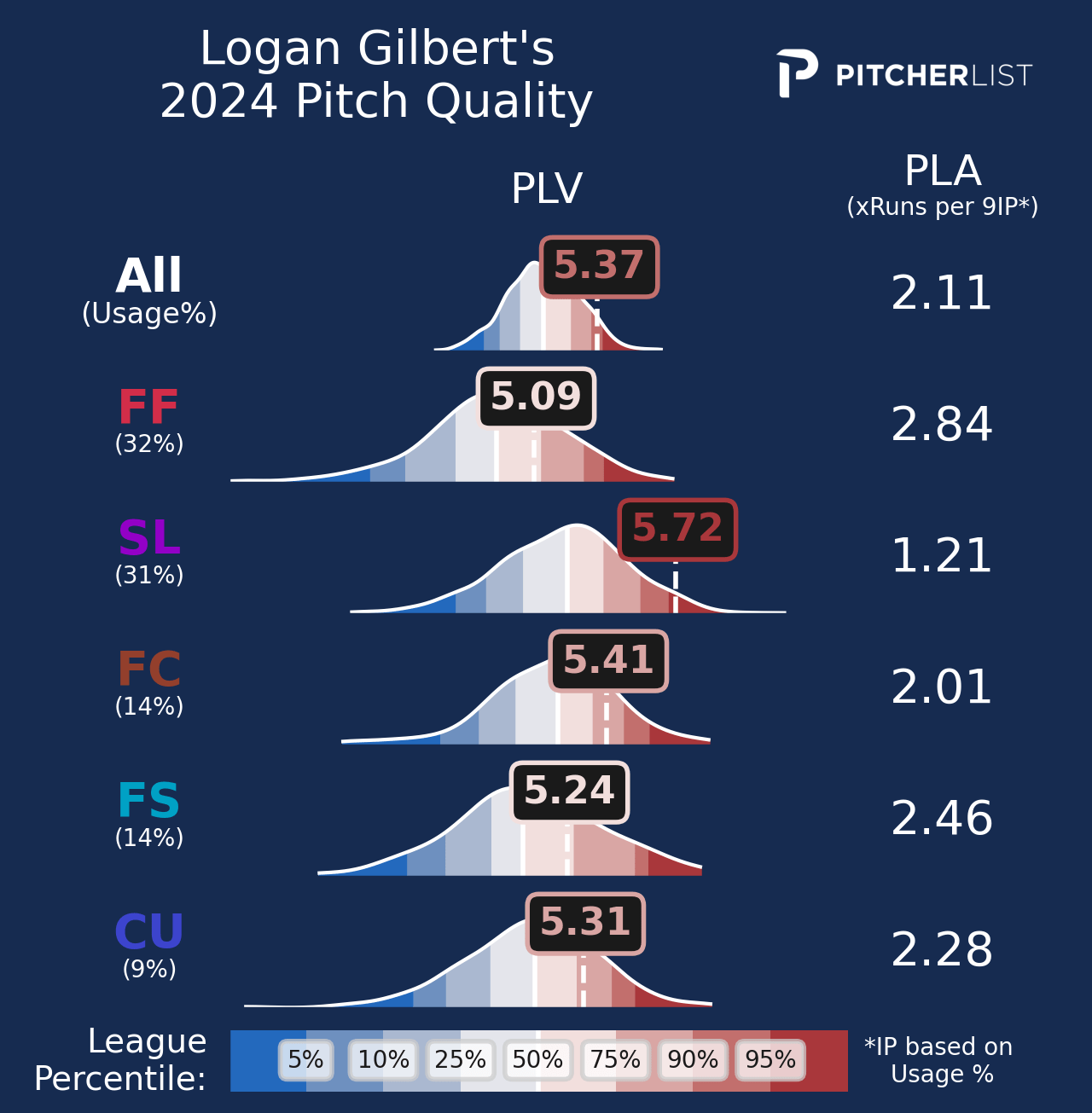
Ober’s ERA doesn’t appear overly impressive, but his WHIP, K%, and SwStr% are elite. The tall righty doesn’t throw hard; his fastball averages only 92mph, but his changeup is devastating. The PLA on his change is an infinitesimal 0.53, and his SwStr% is 23.1%. Ober has also had tremendous success with his cutter, which has the lowest PLA in MLB at 1.52. The cutter isn’t much faster than the change and breaks slightly away from right-handed hitters vs. dramatically in with the changeup. This combination keeps hitters off-balance and is heightened by the excellent extension he gets with his 6’9″ frame.
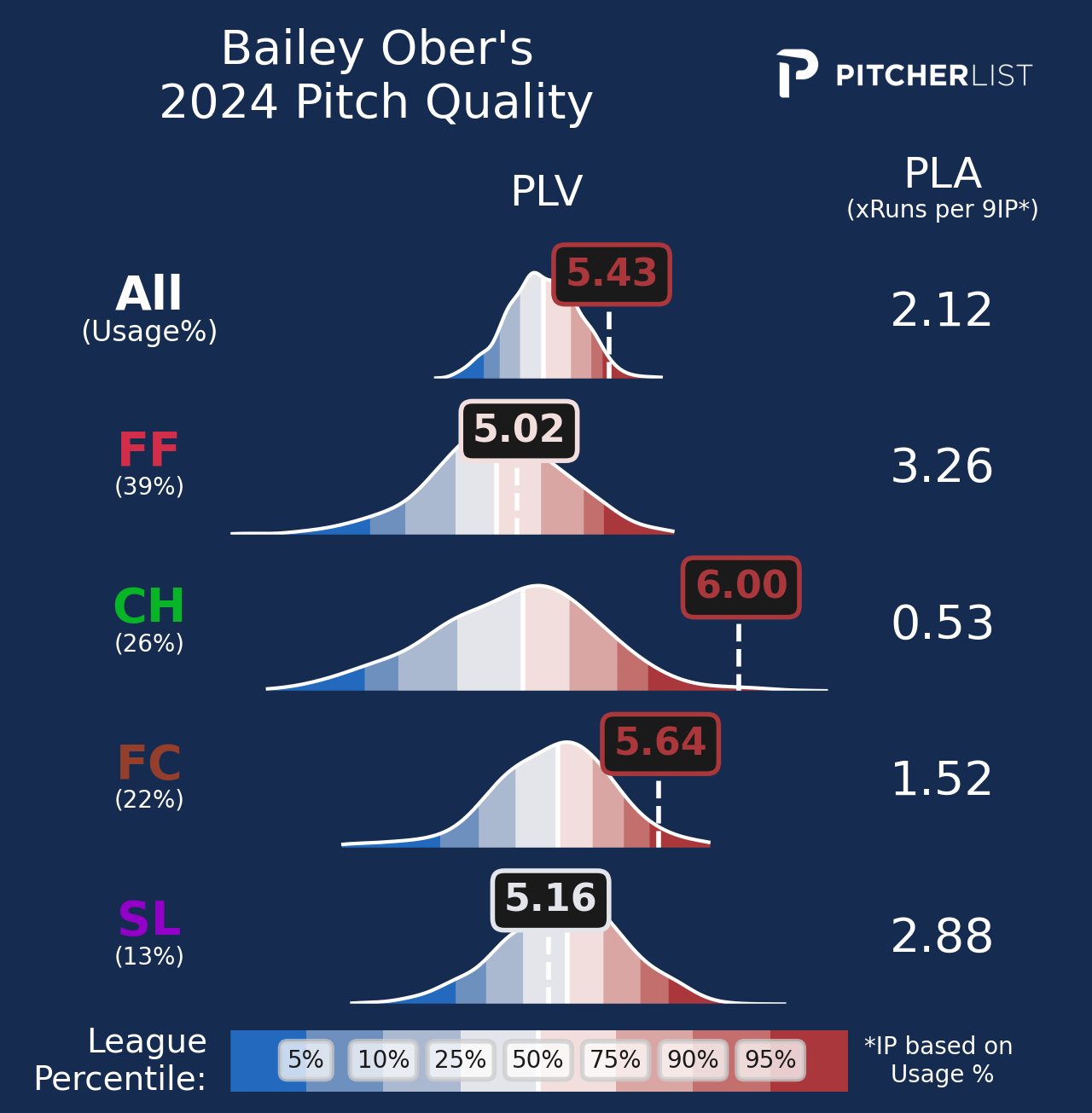
Houck’s turnaround this year has been remarkable, though one has to wonder how far the Red Sox will let him go. With two months to go, he’s already at a career-high in IP. Houck isn’t a strikeout artist. Rather, he induces grounders at a 57.8% clip, which is in the 95th percentile. Most of these come off of his splitter, which, along with his slider, are his two best pitches. Houck’s splitter moves in hard on right-handed hitters while dropping, making it hard to square up, as evidenced by a 0.8% Barrel% against it. His slider does the opposite, with an xMov of -8.9, but still finds the strike zone over half the time. Houck’s ability to control his pitches has led to his breaking out for the surprising Bosox.
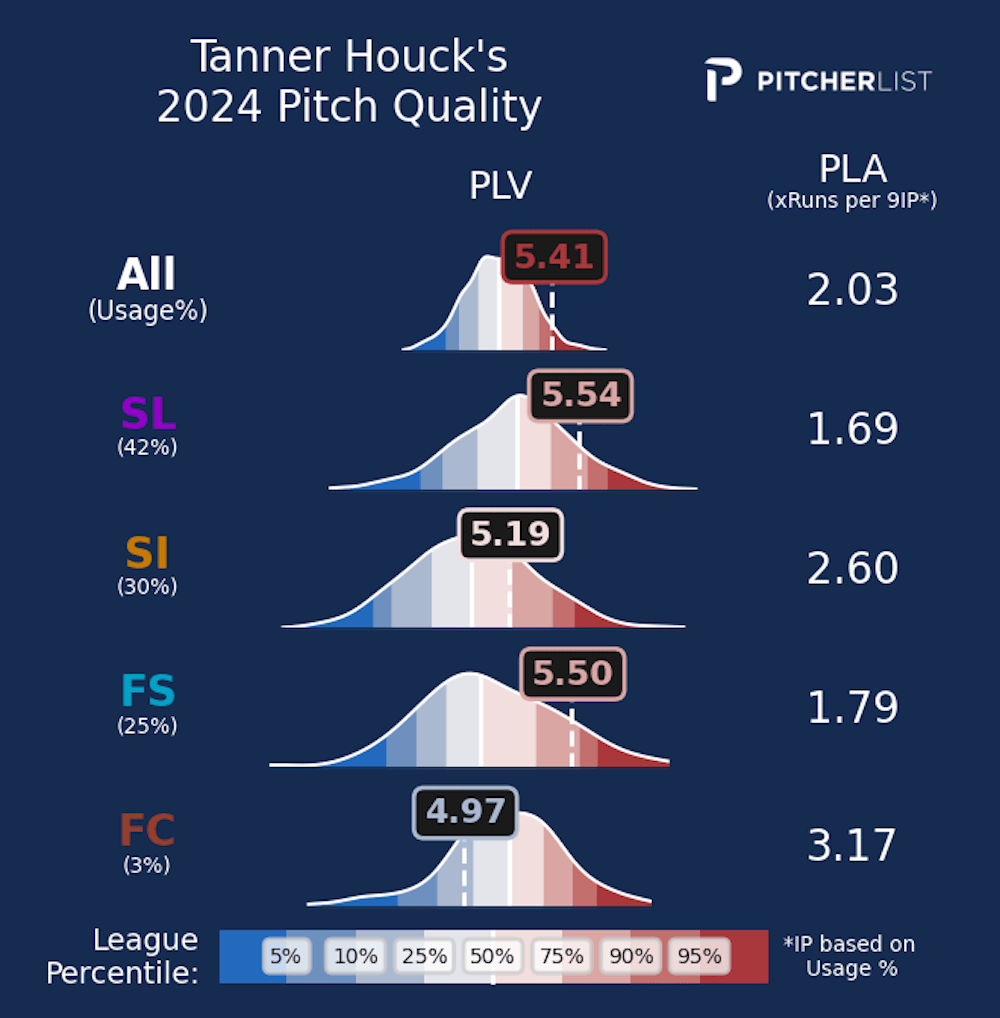
Joe Ryan has long been a PLV darling, largely due to his mastery of the strike zone. Ryan’s BB% is among the best in the AL, and he does it without sacrificing strikeouts, where he also ranks in the Top 10. His bread-and-butter is his four-seamer, which is of average velocity but moves with the best of them. His ability to throw it for strikes is masterful, evidenced by a 33.2% CSW% and 59.7% Zone %. Like many of the Twins’ starters, Ryan introduced a sweeper last season and has relied on it even more in 2024. The 81.3 mph pitch serves as a change-of-pace offering for him, and the opposition has struggled to make hard contact against it.

Houck’s teammate, Crawford, is also on pace to have a career year. Like Ryan, the sweeper he introduced in 2023 has become a big part of his arsenal and his most effective pitch with a PLA of 1.56. The off-speed offering induces a 37.7% O-Sw%, and batters have made hard contact against it only a quarter of the time. Crawford has also had success with his four-seamer and “kutter” which set up the sweeper nicely. His four-seamer rises with the best of them, with a 97th percentile 11.5 yMov.
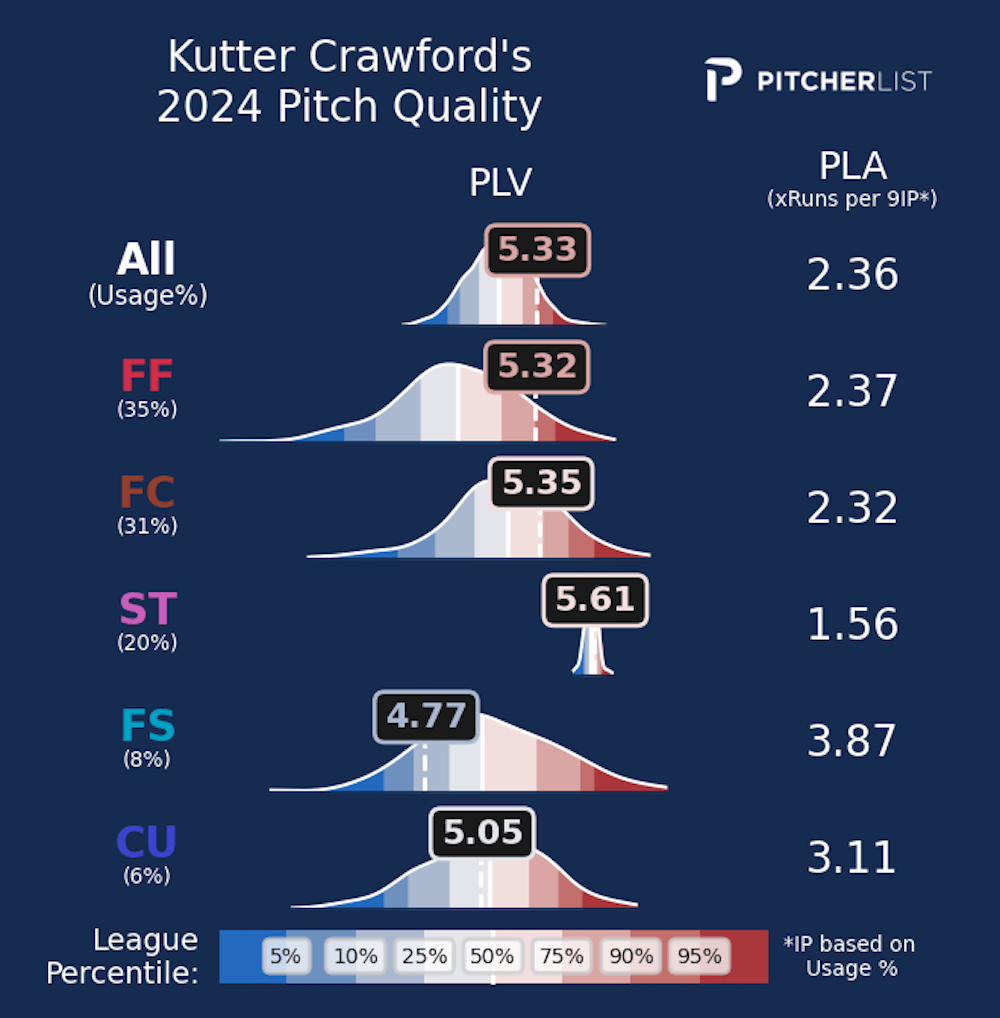
National League
Much of the Phillies’ success this year can be attributed to the “other guys” in their rotation – namely, Ranger Suárez and this man, the unheralded Cristopher Sánchez. Sanchez is another pitcher who doesn’t throw particularly hard – he doesn’t even feature a four-seamer – but still manages to be very effective. He throws a sinker, changeup, and slider, all to great effect. Sanchez’s sinker serves as his fastball, averaging over 94mph with excellent horizontal movement. It doesn’t “sink” much but breaks in hard on fellow lefties and away from right-handed hitters. His changeup breaks similarly but is nearly ten mph slower and induces a 20.5% SwStr%. He rounds out his repertoire with a soft slider that induces groundballs at a high 56.7% clip.
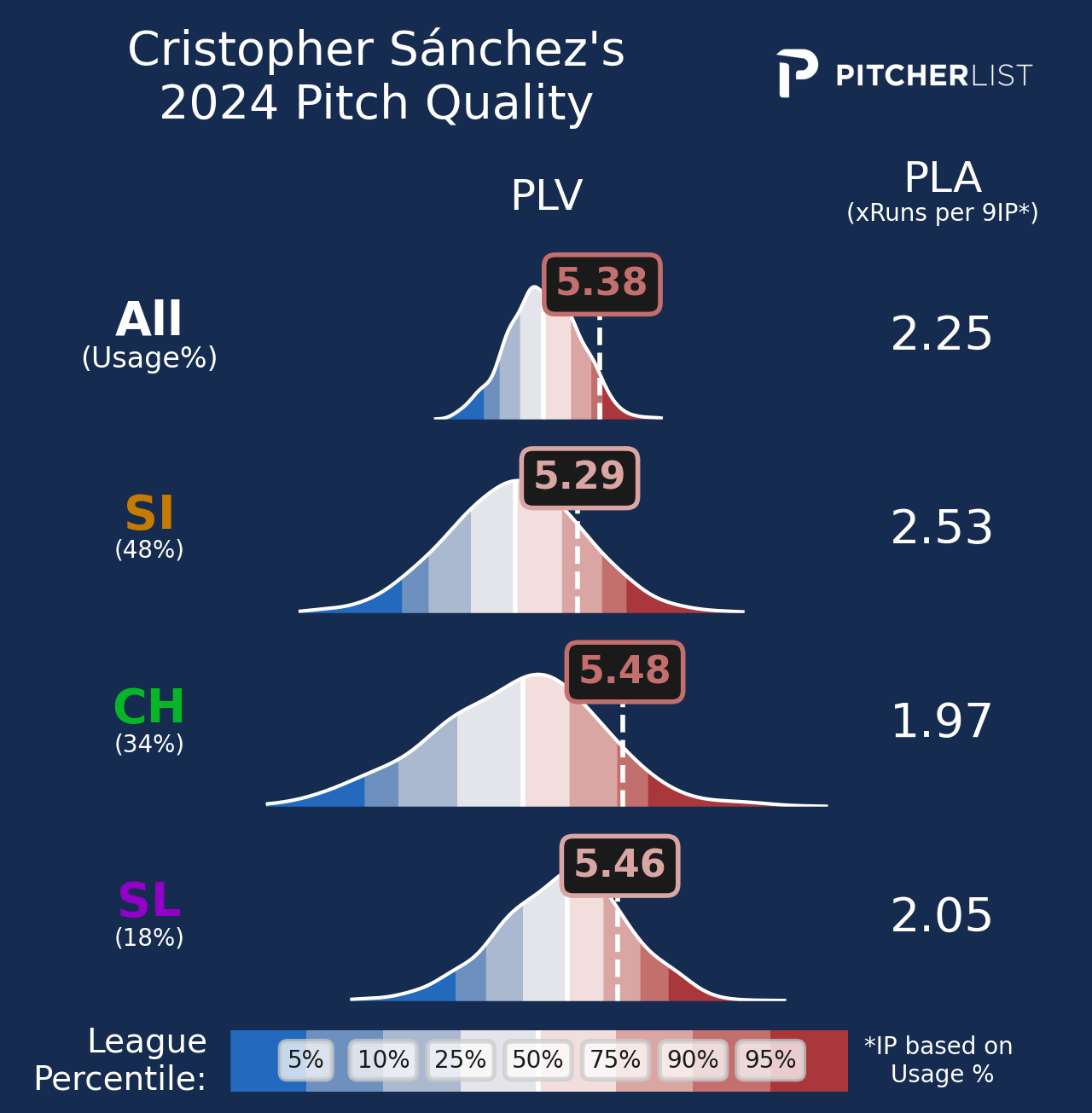
Glasnow has lived up to the hype for Los Angeles, but like Houck, he’s already at a career-high in innings. Thus, the likely playoff-bound Dodgers may opt to give him some rest down the stretch. Unlike many of the pitchers in our rotations, Glasnow throws hard, averaging over 96mph on his four-seamer while keeping it in the zone 57% of the time. It’s his slider, though, that is his greatest weapon. At over 90mph, it’s one of the hardest sliders in baseball, and coming out of the hands of the 6’8″ Glasnow, hitters don’t have much time to react. Hitters whiff against it nearly 41% of the time and rarely make solid contact.
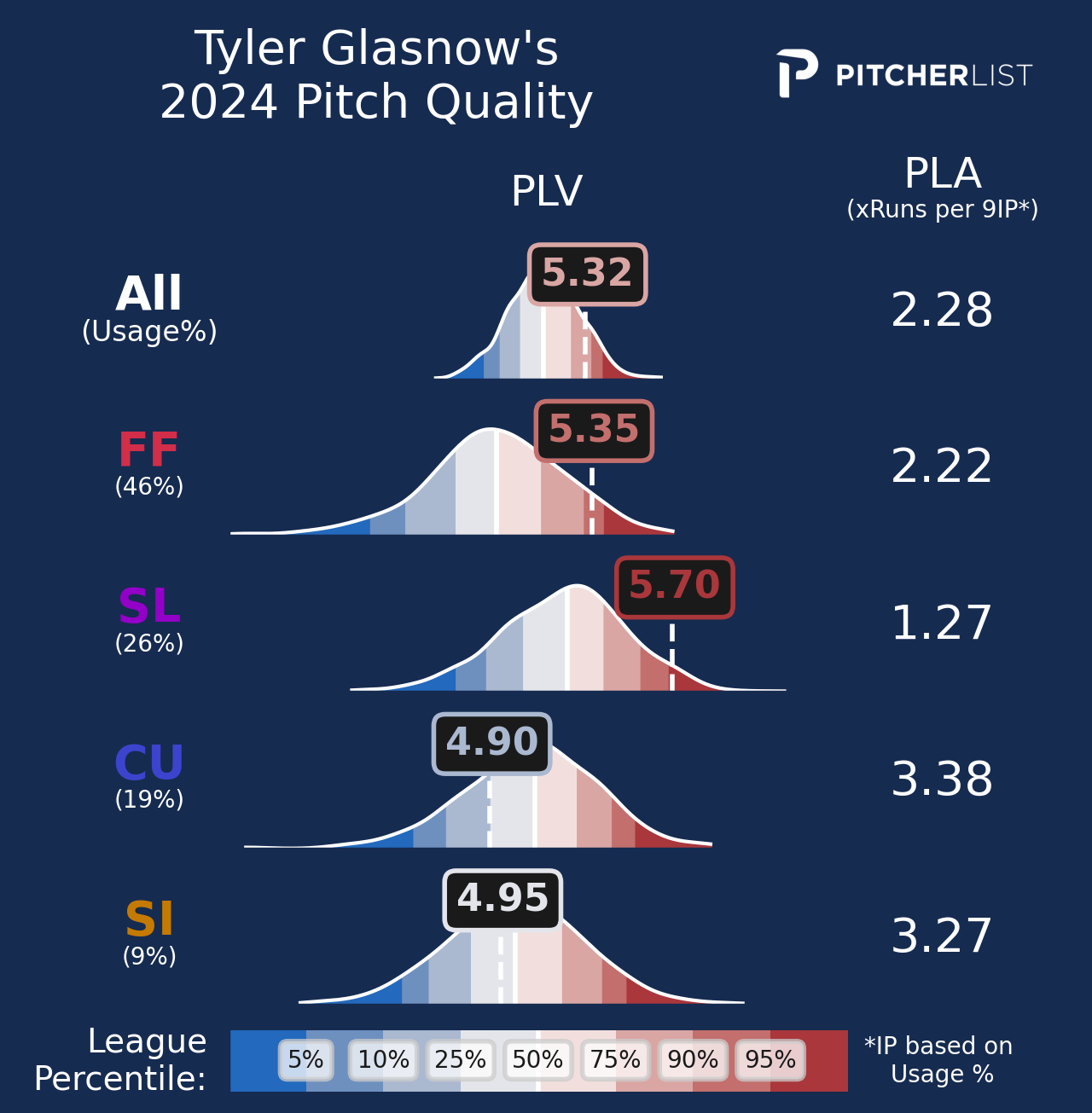
Gray is another offseason acquisition that has paid dividends for his new team. Since signing as a free agent, he’s won ten of 20 starts for St. Louis and owns one of the highest K%s in the National League. Gray is another hurler who’s succeeded with the sweeper he picked up in Minnesota last year. Along with his four-seamer, it has rapidly become one of the most effective pitches in his deep arsenal. The pitch breaks down and away hard from right-handed batters, inducing a ton of chase (47.6%) O-Sw% and strikes (24.8% SwStr%). His four-seamer isn’t fast at 92.5mph and doesn’t move much, but he has terrific control with it and is able to freeze hitters and generate a ton of called strikes with the pitch due to his deep arsenal.
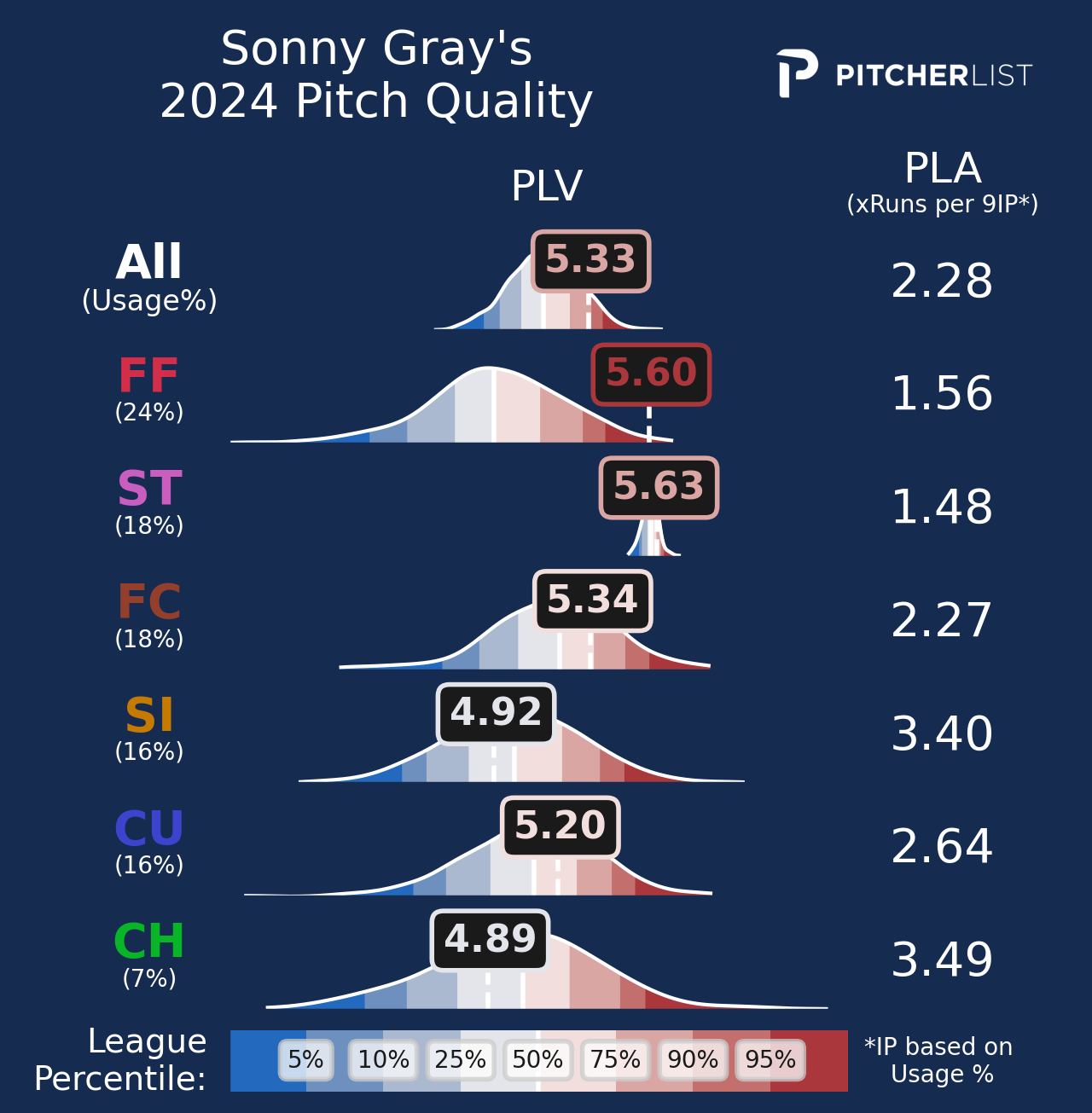
Dylan Cease is in the Glasnow mold—dominating batters with a 97mph four-seamer and a hard slider. He relies on these two pitches 87% of the time and has thrived in his first season in the NL, highlighted by his recent no-hitter against the Nationals. Only Hunter Greene generates more velocity in the NL with his fastball than Cease. The pitch rises tremendously and generates a ton of foul balls. At ten mph slower than his four-seamer, his slider is an 87mph off-speed pitch. The opposition has struggled mightily against the pitch this year, hitting only .157 against it with a 44% Whiff-rate.

It’s all about the changeup for Logan Webb. The Giants’ ace features six pitches but relies heavily on his sinker and change. He introduced a sweeper this season, which he has fared well with, but at the end of the day, his devastating changeup drives his effectiveness and consistency. Webb’s changeup has the lowest PLA in the NL and drops hard and in on righties. Batters offer at it nearly 60% of the time and chase it out of the zone at an absurd 51.7% rate. When they do make contact, it’s often weak and on the ground, as evidenced by a 40.5% HC% and 64.1% groundball rate. Webb may not be a strikeout king, but he’s as dependable as any pitcher in MLB.
